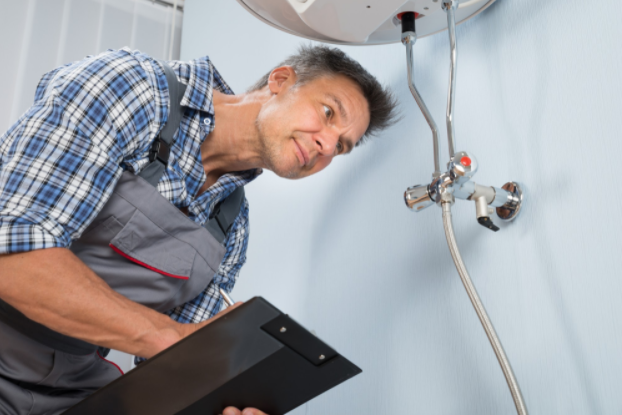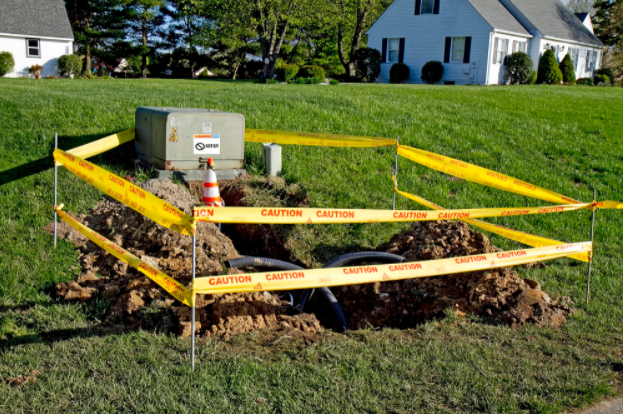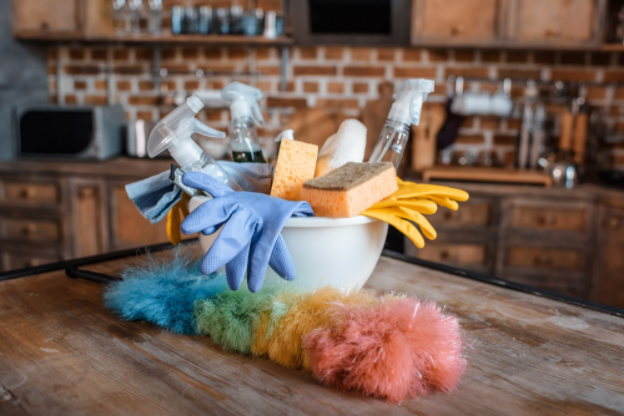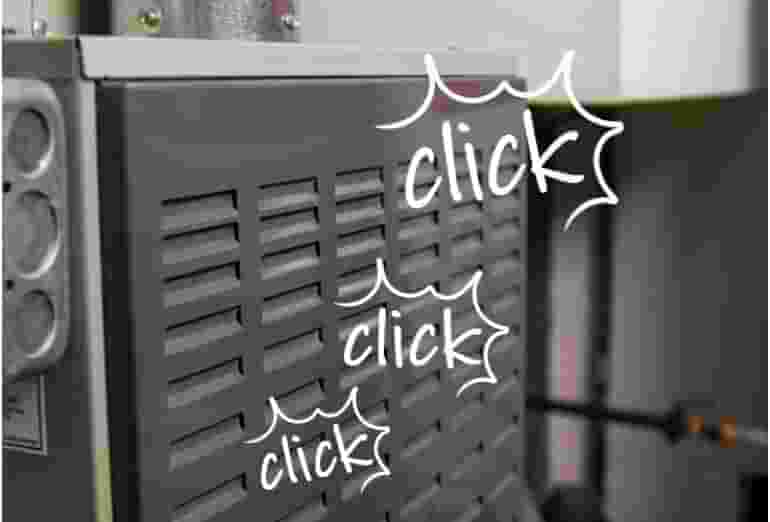An exorbitant amount of water in the home can cause frustration and serious damage to the interior and exterior of the home. Unpredictable weather, burst pipes, unreliable plumbing, and flood zones can cause many headaches for homeowners, especially if they don’t have the proper insurance or preventive measures in place. Additionally, water damage can seriously worsen a person’s health issues by creating an environment in which mould, mildew, bacteria, and other pathogens can grow.
Homes can take weeks or months to completely dry out, and even then, your home may not be habitable. By following this guide, you’ll learn how to identify and prevent the major causes of water damage.
Common Causes of Water Damage
Nearly 40% of all home insurance claims are a result of water damage. Multiple consequences can arise from water damage which, if not taken care of quickly, can escalate and become unwanted health issues. Contaminated water may contain microbes that can grow exponentially, causing mould, bacteria, insects, and viruses to spread. As such, understanding what causes water damage and preventing it from happening altogether is extremely important.
Faulty Home Plumbing
Plumbing issues are fairly common, and can cause damage if they are left alone for too long. Some leaks may be minor and inexpensive while others can cost thousands of dollars in water damage and mould repair. The most common faulty plumbing problems include:
- Dripping faucets
- Slow-draining sinks
- Clogged drains
- Clogged toilet
- Running toilet
- Faulty water heater
- Low water pressure
- Leaky pipes
- Sewer system backups
Many of these faulty plumbing problems happen in the bathroom, a room in which nearly every activity uses water. Often, bathroom leaks go undetected until it’s too late — however, there are surefire signs of bathroom leaks to be aware of:
- Mould and mildew
- Paint or wallpaper damage
- Floor and wall damage
- Ceiling stains
- Musty or earthy odors
If you find one or more of these signs in your bathroom, or anywhere else in your house, it could be time to call in a professional plumber to assess the damage.
City Drains and Sewage
Backed up sewer systems can be extremely unpleasant, from their nauseating odor to the inconvenient renovation schedule. There are many causes of backed-up sewer systems including:
- Clogs
- Tree roots
- Collapsed pipes
Signs that your sewer system is backed up include:
- Foul smells in your yard or basement
- Sewage appearing in your toilet or bathtub
- The shower draining slowly or not at all
- Gurgling sounds from your toilet
- An empty toilet bowl
- Wastewater leakage
- Multiple drains losing water slowly
- Very green grass growing over a septic system
Flooding From Natural Disasters or Severe Weather
Floods are one of the most frequently occurring natural hazards, and it’s important to know what to do before, during, and after a flood, especially if your house has been damaged by floodwater. Additionally, severe weather can cause the same, if not more damage than floods. In 2019, severe weather created $1.3 billion in insured damages. Homes should be restored as soon as possible to prevent more damage from occurring. Floods can occur when:
- There is heavy rainfall
- Thick snowpacks melt rapidly
- Ice jams
- Man-made dams fail
Burst Pipes
Burst pipes can lead to extreme water damage in your home by leaking into the walls, ceilings, and floors. This can lead to serious structural damage, which can be costly if you don’t have insurance to cover the repairs. There is also hidden damage that can be caused by a burst pipe, including:
- Damages insulation and wiring
- Rotted out structural materials
- Mould
- Carpet and floor damage
Pipes can burst for a number of reasons, some of which are out of your control, including:
- Extreme temperatures
- Pipe movement
- Water pressure issues
- Corrosion
Leaking Appliances
Appliances have many hoses and pipes that could develop small leaks over time. These leaks, if left unchecked, could cause structural damage as well as the growth of mould and mildew. Examples of appliances that can leak include:
- Refrigerators
- Water heaters
- Washing machines
- Dishwashers
- Air conditioners
- Garburators
Classes of Water Damage
Different levels of water damage call for different levels of restoration; while leaky pipes can be fixed in hours, damaged drywall and flooring could take weeks. To assess how much restoration will cost you and how much the insurance policy will cover, many insurance agencies use water damage categories, seen in the classes below.
Class 1: Slow Rate of Absorption
Class 1 water damage is defined by little water absorption and a small evaporation load. The restoration focuses on porous material, including:
- Particleboard
- Plywood
- Structural wood
- Vinyl composition tile
- Concrete
The risk of property damage stays low, typically only compromising about 5% of the area. Leaks in this class include:
- Clogged drains
- Leaking pipes
- Leaking faucets
- Malfunctioning or leaking appliances
- Overflowing sinks
- Overflowing bathtubs
These leaks can be repaired quickly and there is minimal clean up required.
Class 2: Fast Rate of Absorption
This class of water damage is used when materials have become soaked, which can complicate and slow down repairs. The most common leaks in this class are:
- Frozen burst pipes
- Faulty water supply lines
- Toilet leaks
- Appliance leaks
These leaks can affect materials like carpets and cushions. Water can seep up walls up to 12 inches while moisture can be retained in structural materials. If not removed right away, there is potential for lasting damage to the structure of the building. Drywall is typically cut above the wet portion to prevent mould and wet carpet must be dried out for days at a time.
Class 3: Fastest Rate of Absorption
Class 3 water damage consists of the fastest rate of absorption. Water can seep into the walls up to 24 inches, and can saturate:
- Ceiling
- Walls
- Insulation
- Carpet
- Subfloors
- Cabinets
- Shower tiles
- Tubs
- Wood
In this class, the liquid likely came from overhead or is the result of a heavy ground floor flooding. Such leaks include:
- Faulty plumbing
- Faulty sprinkler systems
- Roof leaks
A lot more demolition is involved with restoring this class of water damage. Large portions of drywall and wet floors are cut to prevent the growth of mould.
Class 4: Speciality Drying Situations
This type of water damage calls for specialty drying situations which involves wet materials that are harder to dry. The types of materials include:
- Concrete
- Brick
- Plaster
- Crawlspaces
- Stone
Typically caused by flooding from natural disasters, this class of water damage can take the longest to dry as the process is more complex. Special machines are needed to preserve the foundation and structure of the home.
Types of Water Damage and Contamination
Another way to categorize water damage is by the level of danger posed by contaminants in the water. Depending on the level of contamination, water damage can have serious effects on your health due to waterborne chemicals and pathogens. Additionally, determining the severity of the water damage can help assess the correct type of water repair and removal needed.
Category 1: Clean Water
Category 1 water is considered sanitary and does not have noticeable levels of contamination. This water does not pose health risks if it is ingested or inhaled. Sources of category 1 water contamination include:
- Broken water supply lines
- Sink or tub overflows containing no contaminants
- Melted ice, snow, or falling rainwater
- Broken toilet tanks or bowls without contaminants
In this category, most water-damaged items can be saved or restored.
Category 2: Grey Water
Water is considered grey when it begins to breed bacteria or if it contains dangerous chemicals. It is considered significantly contaminated and can cause sickness if you come into contact with it. Sources of category 2 water contamination include:
- Washing machines
- Overflows from toilet bowls
- Aquariums
- Water beds
- Dishwashers
The drying process is more complicated, but with proper equipment and sanitation, it can be done.
Category 3: Black Water
This water category is the biggest threat to your health as it’s the most contaminated. Blackwater can contain disease-causing pathogens, microorganisms, mould, silt, pesticides, organic materials, heavy metals, and toxic organic materials. Sources of category 3 water contamination include:
- Sewage
- Groundwater
- Water from rivers, streams, and lakes
- Waste line backflow
- Any form of seawater
- Storm rains
The damage from black water comes mostly from contamination, and anything that was touched by this type of water should be thrown away immediately.
Steps To Take After Water Damage: What Can You Do?
Don’t Wait, Act Fast
Water damage must be acknowledged as quickly as possible — especially when the extent of the damage might be hidden. To handle water damage as quickly as possible, it’s important to create a water mitigation plan:
- Identify all potential sources of water damage
- Hire a professional to conduct a risk assessment for water damage
- Put preventative maintenance steps in place
- Know where all emergency shut off switches are
- Create reminders once a year to check all sources of water damage
- Collect and store emergency phone numbers of professionals who can help
- Ensure all drains are directed to flow away from the house
Identify the Issue
Identifying the source of the water damage is the first step in remedying the issue. Water leaks can come from a variety of sources, and you might need a professional to assist you with your investigation. Common examples of water leaks include:
- Hot water tanks: Valves on hot water tanks are connected directly into a drain and could easily leak without you noticing. To look for a leak, either remove the drain pipe or listen for a hissing noise.
- Toilets: Removing the top of the toilet tank can make it easier to locate the leak. One tactic to implement is to add food dye to the tank to determine where the leak is.
- Meter Lines: By walking through the area between the meter and the shutoff valve, you can look for signs of a leak, like soft muddy areas or areas where the grass is growing greener and faster.
- Hose bibs: Typically located on the back or front of the house, hose bibs are relatively easy to find. Listen for a sound emitted from the hose bib, and be sure to tell your plumber where the source is.
Remove the Water
The drying process should be started within 24 hours of water damage to prevent mould and mildew. If you have water-build up, there are steps to take to get rid of it:
- Use buckets to scoop standing water
- Use a wet-dry vacuum
- Mop the area with the highest saturation
- Dry furniture by blotting
- Push water through exterior doors with a floor squeegee or a push broom
Remove Unsalvageable Items
Items that can’t be salvaged should be thrown away immediately. While carpets and drywall can be saved from minor leaks, flooded homes can leave ruined furniture and structural damage. Water can permanently damage different materials, especially if the damage includes grey or black water. Materials that are easily damaged by water include:
- Upholstered furniture
- Carpets
- Area rugs
- Wood
- Paper-faced drywall
- Books and other papers
- Photographs
- Electrical items
Extremely saturated materials can be dried out, however, if the water was considered category two or three, it is best to throw those items out to avoid any health issues in the future.
Get the Air Circulating
The drying process must be thorough to prevent mould and mildew. Mould can worsen health problems like asthma, respiratory disease, skin irritation, allergies, fever, eye irritation, and sore throat. To dry out a room, be sure to:
- Open windows to let natural airflow in
- Place fans pointing towards the ground to help dry out the carpet
- Place humidifiers in the room to help mitigate the moisture
- Place plastic sheets on the walls and heaters in the room to help water evaporate
- Drill holes in the walls to help dry the walls properly
Mould can set in as early as 24 hours after a water damage incident, so it’s important to dry out the home as soon as possible.
Thoroughly Clean Up
After removing the water from your home, it’s important to disinfect the area to prevent contaminants from spreading. Bacteria can travel up sewers, toilets, and drains, and could cause bigger health issues in the future. Use an all-purpose disinfectant to clean areas like:
- Walls
- Wood
- Tiles
- Upholstered furniture
- Floors
- Any other items that were touched by the water damage
It’s important to disinfect after the water has evaporated from the room to avoid prolonging the drying process.
How to Detect Water Damage in Its Early Stages
Catching signs of water damage early on could mean avoiding serious money and health issues. Waiting to repair water damage, even for just a few days or even hours could have serious consequences. For example:
- Within minutes, water can saturate floors, upholstered furniture, walls, and paper belongings like books and photos. Structures can also become warped and swollen.
- Within hours, drywall can swell and metal can tarnish. Damp, musty odors begin to fill the home and wooden furniture can begin to absorb water.
- Within a week, the home can become water-logged. Mould spores can colonize in the moist area while doors and windows swell and warp. Wall paint can blister and flooring can swell and warp.
- Beyond a week, the home structure is either extremely expensive to repair or is beyond repair. Extensive mould has affected the home making it unsafe to live in.
The longer the water damage is left, the bigger, longer, and more expensive the restoration process. How quickly you can detect water damage greatly affects how much damage it will end up causing — both to your home and your finances.
Water Damage Signs
Knowing what to look for can help prevent water damage:
- Spotting on the wall or ceiling
- Flaking or cracking drywall
- Dripping pipes, sinks, toilets, etc.
- A feeling of dampness in your home
- Peeling paint
- Bubbling wallpaper
- Buckling floors
- Cracking grout
- Changing smells, either musty or mouldy
- An increasing water bill
Things To Consider Purchasing
Consider purchasing equipment that can help detect water damage early on. They can also measure the aftereffects, and can help in the restoration process if need be. These items include:
- Water leak sensors: These sensors sound an alarm when a water leak is detected. It detects sounds coming from pipes that register on the machine.
- Mould testing kits: These kits offer a wide range of services. Some can detect mould on surfaces or in the air. Basically, the kit comes with a petri dish that has been treated with a culture that promotes mould growth. By placing it near the area you think is affected by mould, it will detect if mould is present.
- Thermal imaging cameras: These types of cameras can help detect water damage inside walls or underneath floors. However, these cameras cannot provide much more detail than outright detection and should only be used for such.
- Moisture meters: These meters are used to test how much moisture is in a material. It can be tested on wood and non-wood materials, like concrete. You can purchase meters with or without pins, and both types can detect water as little as 5%.
While these tools can help detect water damage early on, be sure to consult with a plumbing professional before restoring your home on your own.
Preventative Maintenance To Avoid Residential Flooding
Preventative maintenance can help ward off residential flooding. This type of maintenance is performed on equipment that is still running properly so that it won’t break down unexpectedly. Some examples of preventative maintenance include:
- Fixing roof leaks
- Repairing plumbing leaks
- Maintaining the gutters
- Sealing foundation cracks
- Installing backflow pumps
- Unclogging sink and tub drains
- Flushing out hot water from the water heater
- Checking for leaks in the water heater
- Wrapping insulation around pipes in the colder months
- Checking for leaks during thaws
- Inspecting and pumping the septic tank
- Draining outdoor sprinkler systems
This maintenance should be performed every season, in some cases should be done by a professional, and extreme changes in the weather can cause water sources to move or can become damaged.
When To Call a Professional
Water damage situations can get out-of-hand quickly, even if they seem easy to fix at first. To avoid increasing your restoration bill, consider calling a plumber:
- If your electrical wiring is compromised
- If there is more than an inch of water
- If the water damage reaches the ceiling
- If there is black or contaminated water
- If you have no water at all
- If your water heater is sweating
- If the water pressure is low
- If your faucets won’t stop dripping
- If your toilet keeps overflowing
- If your house smells like sewage
- If you install new pipes, sinks, or tubs
- If your septic tank leaks
- If your sewer line breaks or leaks
- If there are gurgling noises coming from drains
Services You May Need
Water damage restoration can be an involved process and may require an assortment of services to make your house hospitable again. These services include:
- Mould prevention and cleanup
- Dehumidification
- Water removal
- Plumbing work
- Electrical work
- Carpet restoration
- Cleaning and sanitizing
- Storm damage repair
- Sump pump repair
When water damage is particularly severe, relying on professional services can help give you peace of mind and may prevent more expensive damage.
Additional Resources for Water Damage Prevention and Remediation
There are many resources available for water damage prevention and remediation. These agencies can help you identify leaks and put you in touch with vendors that can help.
- Insurance Bureau of Canada
- The Government of Canada: Moisture and Mould in Your Home
- CMHC: Flood Cleanup and Mould Prevention
- Canada’s Restoration Services
- Ontario Clean Water Agency
- Flood Services - Flooded Basement & Water Damage Restoration
- Restoration Canada
- Canadian Disaster Restoration Group
- 911 Restoration of Vancouver
- Water Damage Toronto
 Click to call
Click to call






